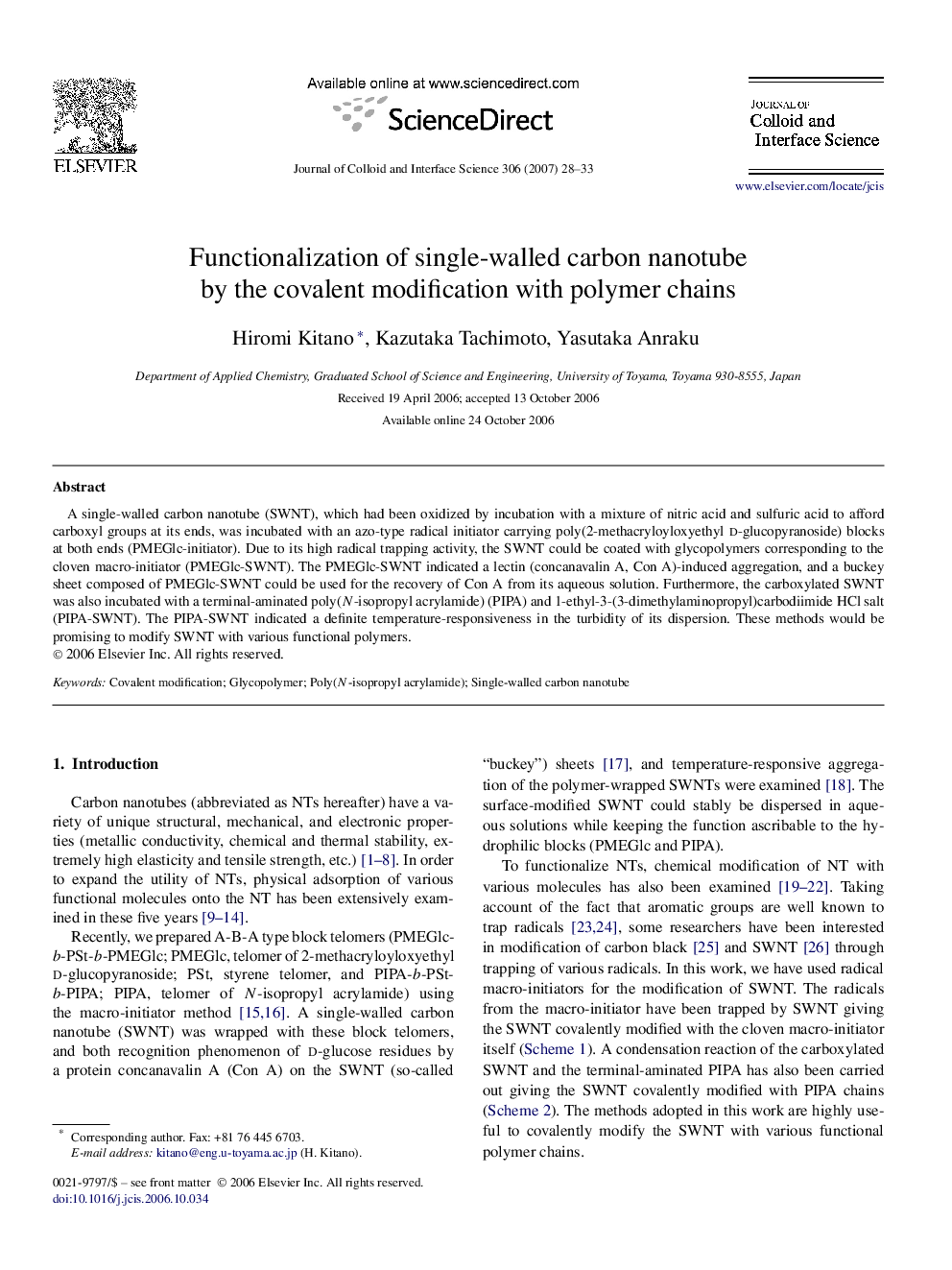| Article ID | Journal | Published Year | Pages | File Type |
|---|---|---|---|---|
| 613115 | Journal of Colloid and Interface Science | 2007 | 6 Pages |
A single-walled carbon nanotube (SWNT), which had been oxidized by incubation with a mixture of nitric acid and sulfuric acid to afford carboxyl groups at its ends, was incubated with an azo-type radical initiator carrying poly(2-methacryloyloxyethyl d-glucopyranoside) blocks at both ends (PMEGlc-initiator). Due to its high radical trapping activity, the SWNT could be coated with glycopolymers corresponding to the cloven macro-initiator (PMEGlc-SWNT). The PMEGlc-SWNT indicated a lectin (concanavalin A, Con A)-induced aggregation, and a buckey sheet composed of PMEGlc-SWNT could be used for the recovery of Con A from its aqueous solution. Furthermore, the carboxylated SWNT was also incubated with a terminal-aminated poly(N-isopropyl acrylamide) (PIPA) and 1-ethyl-3-(3-dimethylaminopropyl)carbodiimide HCl salt (PIPA-SWNT). The PIPA-SWNT indicated a definite temperature-responsiveness in the turbidity of its dispersion. These methods would be promising to modify SWNT with various functional polymers.
Graphical abstractGlycopolymer radicals corresponding to the cloven macro-initiator were covalently fixed to the single-walled carbon nanotubes (SWNTs). The thermo-responsive polymers were also fixed to the SWNT by the condensation reaction.Figure optionsDownload full-size imageDownload as PowerPoint slide
